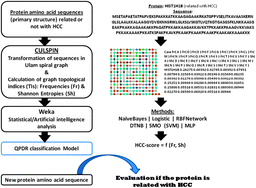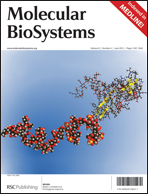Naïve Bayes QSDR classification based on spiral-graph Shannon entropies for proteinbiomarkers in human colon cancer
Abstract
Fast cancer diagnosis represents a real necessity in applied medicine due to the importance of this disease. Thus, theoretical models can help as prediction tools. Graph theory representation is one option because it permits us to numerically describe any real system such as the


 Please wait while we load your content...
Please wait while we load your content...